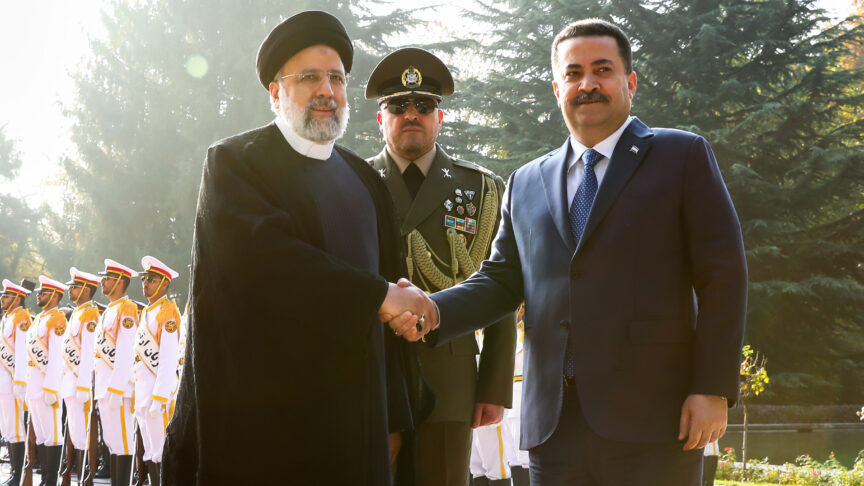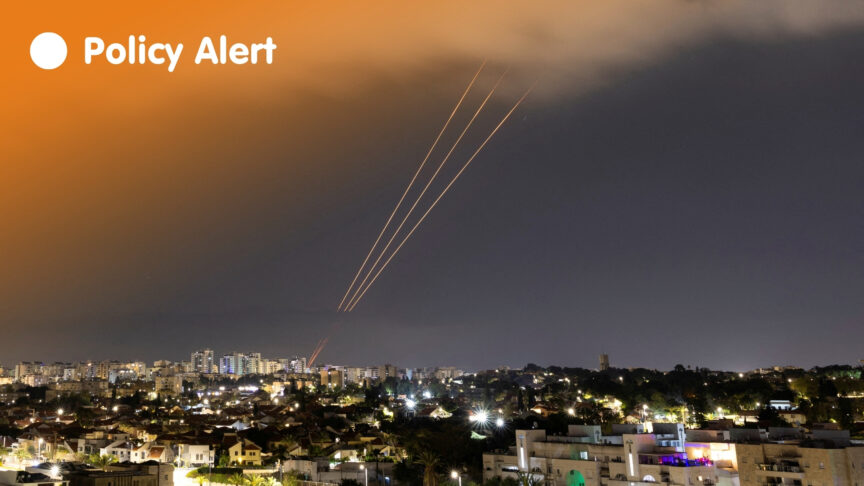Nuclear talks with Iran – no summer lull for negotiators
The toughest hurdles in this marathon diplomacy track have only just been encountered.
Six world powers and Iran confirmed in the early hours of Saturday, 19 July, that the nuclear talks would extend to 24 November. The next phase of negotiations will focus on Iran’s domestic enrichment capacity, the associated numbers of centrifuges, and fixing the duration of a final deal. A further rollover of these talks is highly unlikely. Given the unpalatable alternatives for both sides, the extension, which should allow diplomacy to take its course, is certainly to be welcomed. It is worth remembering that this four-month extension is dwarfed by the decade of talks that brought us to where we are today. The toughest hurdles in this marathon diplomacy track have only just begun.
In Vienna this month, Iran and the E3+3 (France, Germany, the United Kingdom, Russia, China, and the United States) spent two solid weeks in lockdown to agree on a comprehensive nuclear deal. Under the Joint Plan of Action (JPA) signed last November, Iran agreed to limit its nuclear programme in return for some economic relief while negotiations continued. The JPA was originally supposed to expire on Sunday, 20 July, and was subject to extension by mutual consent. But it became evident during the last few days of the talks that more time was required to debate the enrichment issue. The French foreign minister was quick to point out that had there been no potential to reach a final agreement, the negotiations would have ended in this round. Western stakeholders have emphasised that the JPA is a means to an end deal and not a status quo open for indefinite rollover.
It is understood that a formal document delineating the terms for an extension will not be made public. The following is a rough outline on how the rollover will work based on a mixture of public and unofficial statements made by Iran and the E3+3 countries.
In addition to continuing to uphold its JPA commitments, Iran has agreed to:
- Convert a quarter of its 20 percent enriched uranium oxide into metal fuel plates for the Tehran Research Reactor. The conversion will make it time consuming and difficult for Iran to use this material for further enrichment in a breakout scenario.
- Combine all of its up to two percent stockpile (this weighs roughly three metric tons) with depleted uranium to dilute its stock into a natural uranium form. This will make it so that Iran has many steps to complete before being able to turn this stockpile into the highly enriched material that is required to make a bomb.
- Produce rotors used at its Natanz pilot plant solely in areas that are accessible by the International Atomic Energy Agency (IAEA) on a monthly basis. These rotors are used to run advanced centrifuges. This measure will allow for enhanced inspection and creates monitoring provisions over Iran’s activities.
- Limit production of its advanced centrifuges only for the replacement of damaged machines. This will reduce Iran’s capacity to enrich high-level uranium and make a “dash” for a nuclear bomb.
In return, the E3+3 has agreed to:
- Provide Iran with access to $2.8 billion of assets that are currently frozen in overseas banks. This is the pro-rated figure of the $4.2 billion relief provided under the JPA.
- Continue the limited and reversible sanctions suspension provided under the JPAduring the next four months (i.e. suspension of sanctions on petrochemicals, trade in gold, and automotive imports into Iran). A US Treasury official has made it clear there will be no easing of financial, banking, and oil sector sanctions and that they will continue to closely monitor transactions with Iran by foreign companies.
Justifying an extension
The US and Iran spent hours haggling on the final terms of an extension. The US essentially wanted a down payment from Iran, by way of additional restrictions on its nuclear programme, to show its commitment to a final deal. The E3+3’s justification for the extension was based on that fact that (a) Iran had implemented the interim deal in good faith; (b) there had been some progress on key issues during the July discussions; and (c) contrary to the fears expressed by those opposing diplomacy with Iran, the JPA did not lead to an unravelling of the sanctions regime. Further, all sides agreed that it was sensible to take advantage of a few more months of negotiating space before they seriously considered walking away.
The IAEA has repeatedly confirmed that Iran is fulfilling its JPA commitments. Iran has neutralised its entire 20 percent enriched uranium stockpile and limited its five percent stockpile; allowed enhanced IAEA inspection of its nuclear sites, including the disputed Natanz facility; refrained from installing newly developed centrifuges; and has made no new advancements at the Arak nuclear facility. US Secretary of State John Kerry pointed out that real progress had been made on several key issues, including on the Fordow and Arak nuclear facilities, Iran’s stockpile of low-enriched uranium, enhanced monitoring and verification, research and development, and the potential military dimensions of Iran’s nuclear programme.
The tough hurdles
The nuclear issue is often described as a “Rubik’s cube” that can be solved in a combination of ways depending on the extent of concessions provided on each issue. Real differences remain over Iran’s enrichment capacity and centrifuge numbers. Unfortunately, both sides have fuelled a public numbers war over acceptable centrifuges; this will likely restrict the political space for negotiators. Meanwhile, the West has insisted that Iran only needs a couple of thousand first-generation centrifuges and has called for the dismantlement of a vast quantity of Iran’s total 20,000 centrifuges.
At the same time, Iranian Supreme Leader Ali Khamenei reiterated earlier in July 2014 that no centrifuges would be dismantled and that Iran would eventually require an industrialised nuclear programme consisting of roughly 100,000 first-generation centrifuges. Iranian officials said that this actually gave them flexibility because Khamenei had not set a time frame for this specification, so they could accept a longer-term framework in order to reach this stage. Western powers see these ambitions as an unacceptable, at least for the near future.
Iranian Foreign Minister Javad Zarif publicly explained on 15 July that as part of a final deal Iran is willing to limit its nuclear programme to existing levels of enrichment until the Bushehr agreement with Russia expires in 2021. This would mean that Iran caps its enrichment levels at 3.5-5 percent and maintains its existing 20,000 centrifuges with roughly 10,000 of these operational. Though Iran perceived this as a concession, Western powers weren’t convinced. First, because the West has calculated that Iran still needs years of research and development to prepare itself for larger scale enrichment capacity and therefore is not really making any compromises with this offer. Second, that for a larger scale programme, Iran would need much more developed centrifuges; this is something that the West is not willing to allow. It therefore makes little sense for Iran to insist that its current centrifuges remain, as this would not fulfil its stated need.
Taking a leap of faith on trust
High on the agenda for both the US and Iranian negotiators is being able to go home with a deal that they can sell to powerful hardliners. The nuclear programme is a source of extensive national pride for Iran’s government. While Iran is wiling to compromise on its enrichment production lines and enhanced inspection, the idea that it would have to dismantle its centrifuges and accept tight restrictions on research is perceived by Iran as humiliating and unacceptable. The US administration meanwhile has to contend with those who are opposed to any diplomacy with Iran, particularly Israel and powerful forces in Congress. Throughout the talks, these factions have been calling for fresh sanctions and placing unreasonable limitations on Iran’s nuclear programme that they know would kill the deal.
The talks will reconvene in the coming weeks in different technical and political formats. In September, the foreign ministers of those countries that are taking part in the negotiations will meet for high-level talks on the sidelines of the United Nations General Assembly. Catherine Ashton, who is due to step down from her role as European Union high representative at the end of October, will nevertheless continue to chair the nuclear talks throughout the extension period in order to minimise any disruption.
Over the coming months, the US and Iran are expected to try to pave the way for the compromises that will be necessary for a final deal, focusing specifically on neutralising their opposition at home. Europeans, meanwhile, can play a critical role in smoothing out this process. Along these lines, in Détente with Iran: How Europe can Maximise the Chances of a Final Nuclear Deal, we recommended that during a rollover of the talks, Europe should fully utilise its diplomatic ties with both Iran and regional actors to boost the momentum that is required for the final stretch of the talks.
The progress that was made during the long bilateral meetings between Zarif and Kerry in Vienna reassured both sides that a deal is indeed possible. A comprehensive nuclear agreement is imperative for meeting Western proliferation concerns – upping sanctions or carrying out a military strike would only serve to slow rather than prevent Iran from developing a weaponised nuclear programme. The military route in particular would further destabilise an already turbulent Middle East.
Technically, there are creative solutions on the table. What we need now is a diplomatic breakthrough that far exceeds any precedent between the West and the Islamic Republic of Iran. Politicians on both sides will have to take a leap of faith in order to trust that their counterpart can deliver and make decisions that will continue to build confidence.
The European Council on Foreign Relations does not take collective positions. ECFR publications only represent the views of their individual authors.


